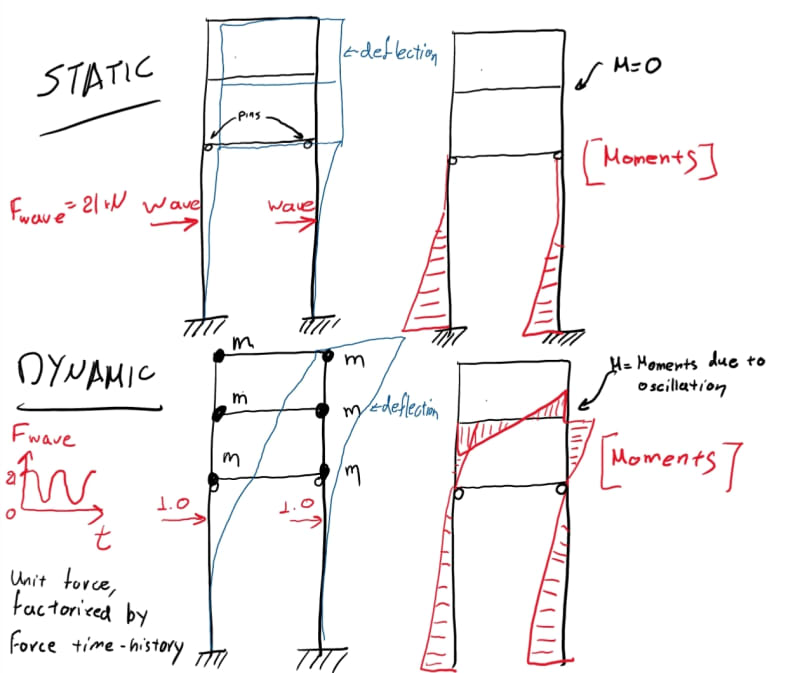Hi everyone,
I design a 2-storey steel building on a jetty head which is 100m into the sea. The water depth to seabed is shallow and waves are small (Mean SWL 4m+3m storm surge, Significant wave 2.5m). The jetty is a set of unbraced steel hollow sections (Diameter 457x16) @5m centres.
I want some opinions on whether I need to design the steel building elements & connections (steel frames) for wave actions. So far I assumed the substructure and superstructure are separate, and performed static analyses for each individually.
I followed BS 6349 which uses the Morrison equation to determine the wave actions. This generates a maximum force 21 kN. It also gives me the wave profile with time.
Should I perform a Time-history analysis? My experience from earthquake design tells me that a spring mass system subject to cyclic velocities/accelerations will generate forces on the first storey due to the motion. However these forces are invisible in static analysis. So should I do time history and design beam/column connections for the wave? Is this common practice on offshore structures?
I looked many books and papers but couldn't find any reference. So I would appreciate some feedback.
Thank you
I design a 2-storey steel building on a jetty head which is 100m into the sea. The water depth to seabed is shallow and waves are small (Mean SWL 4m+3m storm surge, Significant wave 2.5m). The jetty is a set of unbraced steel hollow sections (Diameter 457x16) @5m centres.
I want some opinions on whether I need to design the steel building elements & connections (steel frames) for wave actions. So far I assumed the substructure and superstructure are separate, and performed static analyses for each individually.
I followed BS 6349 which uses the Morrison equation to determine the wave actions. This generates a maximum force 21 kN. It also gives me the wave profile with time.
Should I perform a Time-history analysis? My experience from earthquake design tells me that a spring mass system subject to cyclic velocities/accelerations will generate forces on the first storey due to the motion. However these forces are invisible in static analysis. So should I do time history and design beam/column connections for the wave? Is this common practice on offshore structures?
I looked many books and papers but couldn't find any reference. So I would appreciate some feedback.
Thank you

